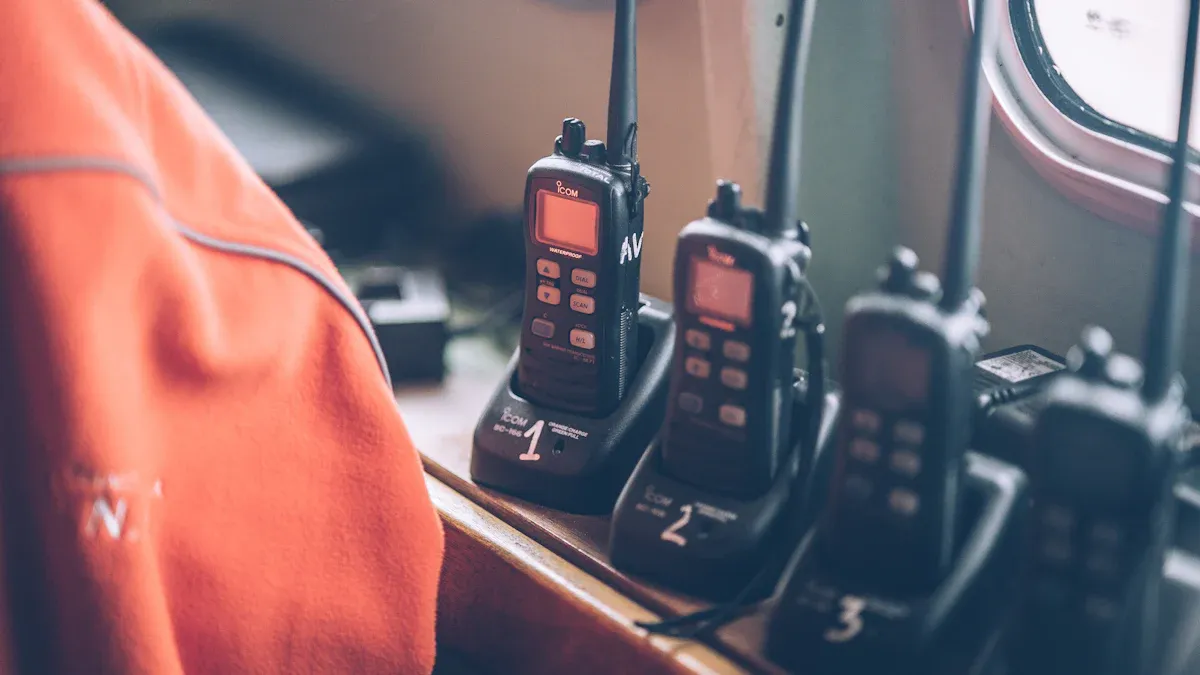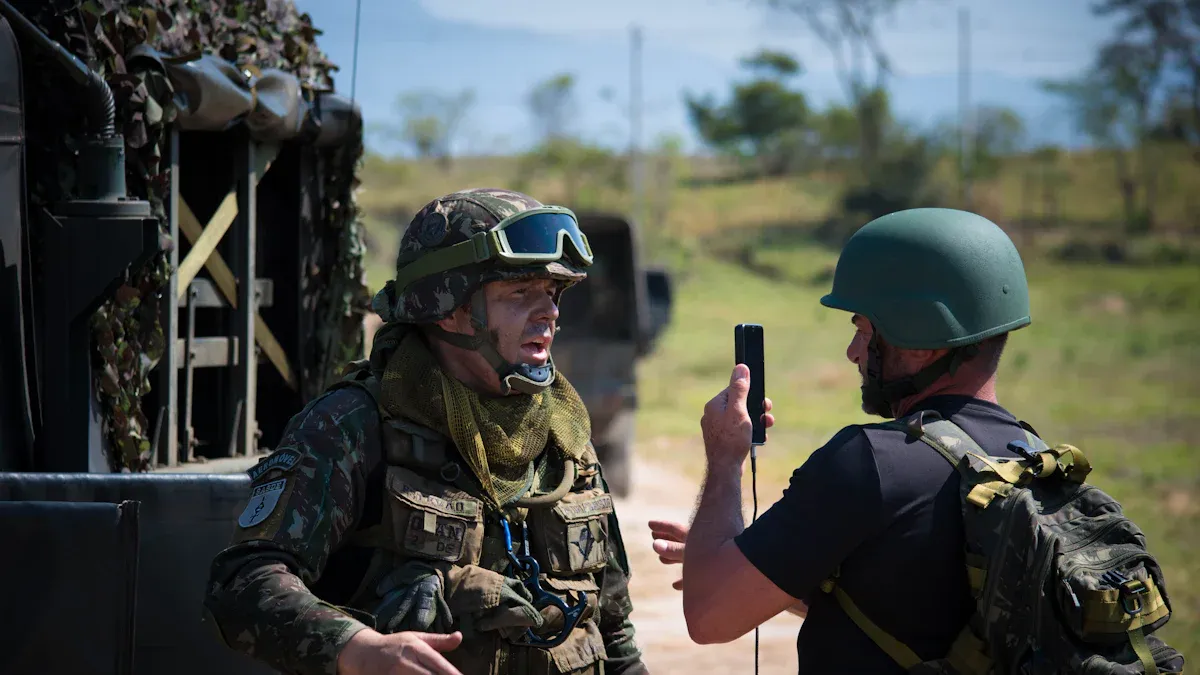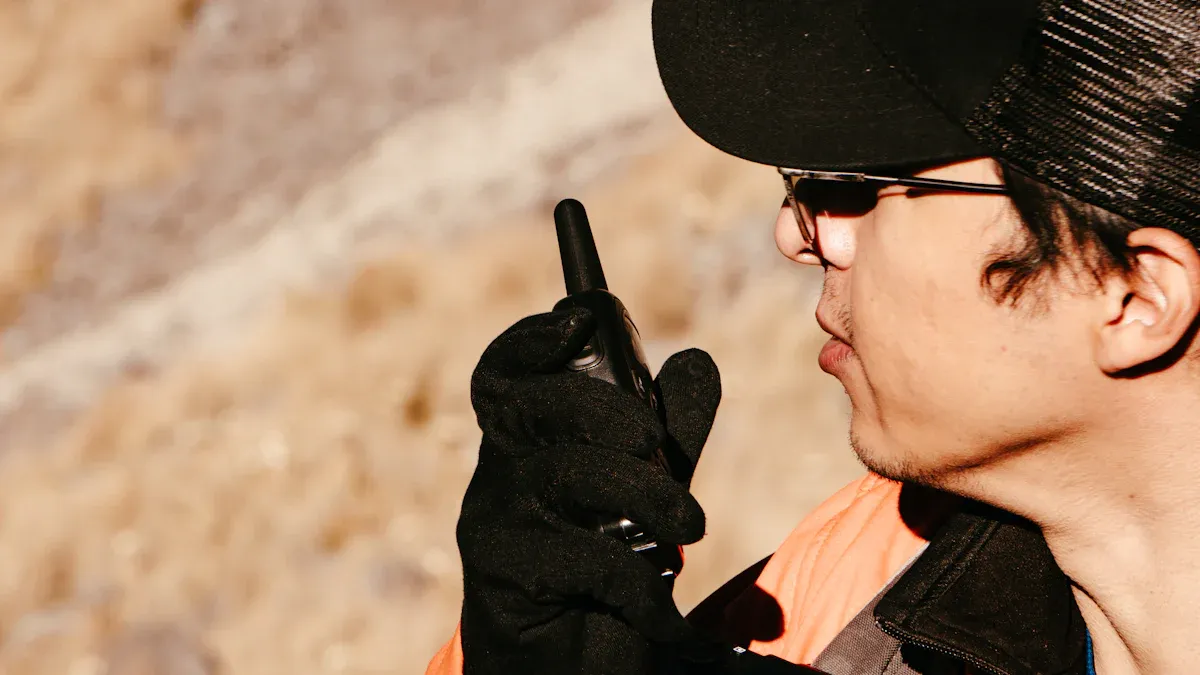
Reliable communication is critical in military operations. Choosing the right military radio handset ensures your team stays connected in any situation. Look for features like the IP67 waterproof grade to handle harsh conditions. Whether you need an h250 handset or another military handset, prioritize durability and performance for mission success.
Key Takeaways
- Know your mission and goals to pick the right radio. Think about range and battery life for your needs.
- Choose strong handsets with MIL-STD and IP ratings. These make sure your device works in tough conditions.
- Make sure it works with your current systems and tools. Check frequencies and connections for clear communication.
Identifying Operational Needs for a Military Radio Handset

Mission Type and Objectives
Your mission type plays a critical role in selecting the right military radio handset. Combat missions often demand rugged devices capable of withstanding extreme conditions. On the other hand, humanitarian operations may prioritize lightweight models with extended battery life. Consider the objectives of your mission. If it involves long-range communication, you need a handset with a wide frequency range. For short-range tactical operations, a compact model with secure encryption features might be more suitable. Always align the handset’s capabilities with your mission’s specific demands.
Environmental Conditions
The environment where you operate directly impacts your choice of a military radio handset. Harsh terrains, such as deserts or jungles, require devices with high durability and weather resistance. Look for handsets with MIL-STD compliance to ensure they can handle shocks, dust, and water exposure. Cold climates may affect battery performance, so opt for models with reliable power options. In urban settings, interference from buildings can reduce signal strength. A handset with advanced frequency-hopping technology can help maintain clear communication in such environments.
Team Size and Communication Requirements
Your team’s size determines the communication features you need. A small team may only require basic point-to-point communication. Larger teams, however, benefit from handsets with group call functionality and multiple channel options. Assess how often your team communicates and the type of information shared. For frequent updates or complex instructions, choose a handset with clear audio quality and minimal latency. Ensuring seamless communication across your team enhances coordination and mission success.
Evaluating Key Features of a Military Radio Handset

Durability and MIL-STD Compliance
Durability is one of the most critical factors when choosing a military radio handset. You need a device that can withstand the rigors of demanding environments. Look for handsets that meet MIL-STD (Military Standard) compliance. This certification ensures the device can endure extreme temperatures, shocks, and vibrations. For operations in wet or dusty conditions, prioritize models with IP ratings like IP67, which guarantee protection against water and dust. A durable handset reduces the risk of failure during critical missions.
Communication Range and Frequency Type
The communication range of your military radio handset determines how far you can stay connected. For long-range operations, select a device with high-frequency capabilities, such as HF or VHF bands. Short-range missions may benefit from UHF frequencies, which perform well in urban environments. Evaluate the terrain where you operate. Open areas allow for greater range, while dense forests or buildings may require handsets with advanced signal-boosting technology.
Power Options and Battery Life
Reliable power is essential for uninterrupted communication. Choose a handset with long-lasting battery life to avoid frequent recharging. Rechargeable lithium-ion batteries are a popular choice due to their efficiency and durability. For extended missions, consider handsets with replaceable batteries or solar charging options. Always carry spare batteries to ensure your device remains operational in emergencies.
Encryption and Security Features
Secure communication is vital in military operations. Modern handsets offer encryption features to protect sensitive information from interception. Look for devices with AES (Advanced Encryption Standard) or similar protocols. Some handsets also include frequency-hopping technology, which prevents unauthorized access by rapidly changing frequencies. Prioritize security features to safeguard your team’s communication and mission data.
Ensuring Compatibility with Existing Equipment
Integration with Current Systems
When choosing a military radio handset, you must ensure it integrates seamlessly with your existing communication systems. Compatibility reduces the risk of communication breakdowns during operations. Check if the handset supports your current software and hardware configurations. For example, some handsets work better with specific command-and-control systems. Testing the device with your setup before deployment can help identify potential issues. This step ensures smooth operation and avoids costly delays.
Frequency and Bandwidth Matching
Frequency and bandwidth compatibility play a vital role in effective communication. Your handset must operate within the same frequency range as your other devices. For instance, if your team uses VHF radios, select a handset that supports VHF frequencies. Matching bandwidth ensures clear and uninterrupted communication. You should also verify that the handset complies with local frequency regulations. This prevents interference with other communication systems in the area.
Interoperability with Other Devices
Interoperability allows your military radio handset to connect with various devices, such as headsets, GPS units, or other radios. This feature enhances flexibility and coordination during missions. Look for handsets with universal connectors or adapters to support multiple devices. Some models also offer Bluetooth or wireless connectivity for added convenience. Ensuring interoperability improves your team’s efficiency and adaptability in dynamic environments.
Choosing the right military radio handset ensures reliable communication during operations. Align the device with your mission needs and evaluate its features carefully. Invest in durable, high-quality equipment that integrates seamlessly with your systems. Regular testing and maintenance keep your handset operational and dependable for long-term use.
FAQ
What is MIL-STD compliance, and why does it matter?
MIL-STD compliance ensures the handset meets military durability standards. It guarantees the device can withstand extreme conditions like shocks, vibrations, and temperature changes.
How do I test a military radio handset before deployment?
Test the handset by simulating mission conditions. Check its range, battery life, and compatibility with your equipment. Ensure clear communication and reliable performance in various environments.
Can I use a single handset for multiple mission types?
Yes, but choose a versatile model. Look for adjustable frequency bands, durable construction, and adaptable features to suit different operational needs.
💡 Tip: Always consult your team’s communication expert to ensure the handset meets your mission requirements.


